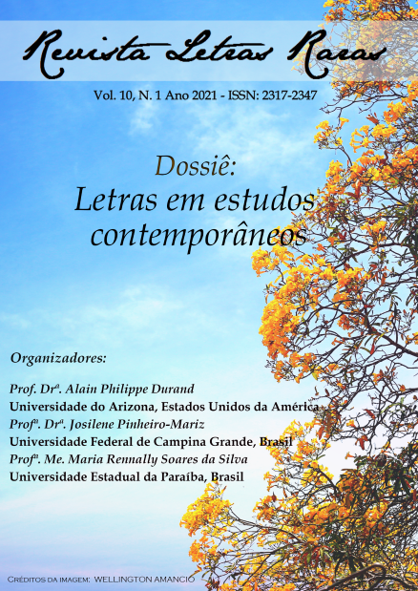The rupture of the mimetic epistemological model
DOI:
https://doi.org/10.5281/zenodo.10261365Palavras-chave:
Mimesis, Iconology, Representation, Baroque, IconophotologyResumo
Mimesis as an epistemological model originated in ancient Greece when artists imitated their masters and followed pre-established models. Humanism, in turn, rescues this model and improves it: just as Vergil imitated Homer, Dante imitated Vergil; if Petrarch sought in the classics the source of inspiration for his poetry, Camões, in turn, makes the sonnets from the Italian as his model, to mention a few examples. However, such a procedure did not represent plagiarism, as it was a way to honor the masters. This model reached its peak in the 17th century, declining in the following centuries, especially in the 19th century. However, with its rupture, the representation models permeated Western culture for centuries were lost, leading subjectivity to assume the preponderant role in art. More than a change in the perception of art, there was a change in the world's perception that surrounds humanity, whose significant influence was due to photography.
Downloads
Referências
AUERBACH, E. Mimesis: the representation of reality in Western Literature. Princeton: Princeton University Press, 2003.
BELTING, H. Imagen y culto: una historia de la imagen anterior a la edad del arte. Madrid, Akal, 2009.
BRANDÃO, J. “O gênero emblemático”. In Travessias 7, Cascavel, 2009.
_________ “A imagem nas imagens”. In Lumen et Virtus, São Paulo, 2010a.
_________ “Da pintura à fotografia: o encetamento iconofotológico”. In Lumen et Virtus, São Paulo, 2010b.
CRARY, J. Techniques of the observer: On vision and modernity in the nineteenth century. Cambridge & London, MIT Press, 1992.
FARINACCIO, P. A questão da representação e o romance brasileiro contemporâneo, 2004, Tese (Teoria Literária), Unicamp, Campinas.
FERRAZ, M. C. F. “Tecnologias, memória e esquecimento: da modernidade à contemporaneidade”, in Revista FAMECOS, Porto Alegre, 49-57, 2005.
GOETHE, J. W. Theory of Colours. London, John Murray, 1840.
GONÇALVES, M. C. F. “A recusa da teoria da mímesis pelas teorias estéticas na virada dos séculos XVII e XIX e suas consequências”. In DUARTE, Rodrigo. Figueiredo, Virgínia (org.) Mímese e expressão. Belo Horizonte, Ed. UFMG, 2001.
HEGEL, G. W. F. Aesthetics: lectures on fine arts (vol.1). New York: Oxford University Press, 1988.
ISER, W. O ato de leitura: uma teoria do efeito estético. Vol. 2. São Paulo, Ed. 34, 1999.
KANT, I. Critique of pure reason. Cambridge: Cambridge University Press, 1999
LESSING, G. E. LAOCOON An Essay on the Limits of Painting and Poetry. Baltimore: The Johns Hopkins University Press, 1984.
MACHADO, A. A ilusão especular: introdução à fotografia. São Paulo, Brasiliense, 1984.
PANOFSKY, E. Meaning the visual arts. New York: Garten City, 2001.
PRAZ, M. Literatura e artes visuais. São Paulo, Cultrix, 1982.
RIPA, C. Iconología (Prólogo de Adita Allo Manero). Tomo l. Madrid, Akal, 2007.
______. Iconología. Tomo II. Madrid, akal, 2007.
SCHØLLHAMMER, K. E. “Regimes representativos da modernidade“. In Alceu, v. I, n. 2, Rio de Janeiro, 28-41, 2001.
Downloads
Publicado
Como Citar
Edição
Seção
Licença
Copyright (c) 2023 Revista Letras Raras

Este trabalho está licenciado sob uma licença Creative Commons Attribution-NonCommercial 4.0 International License.







